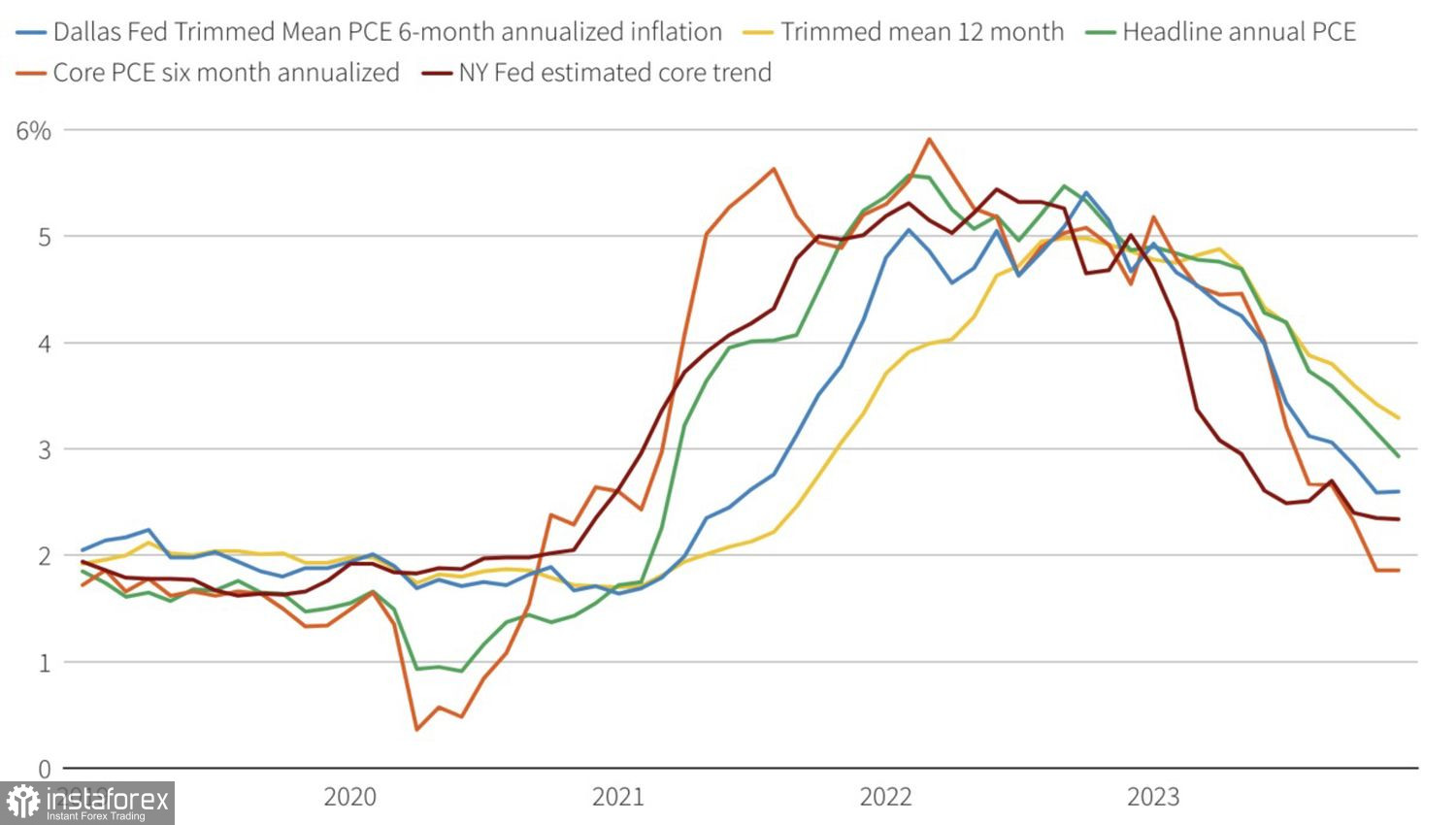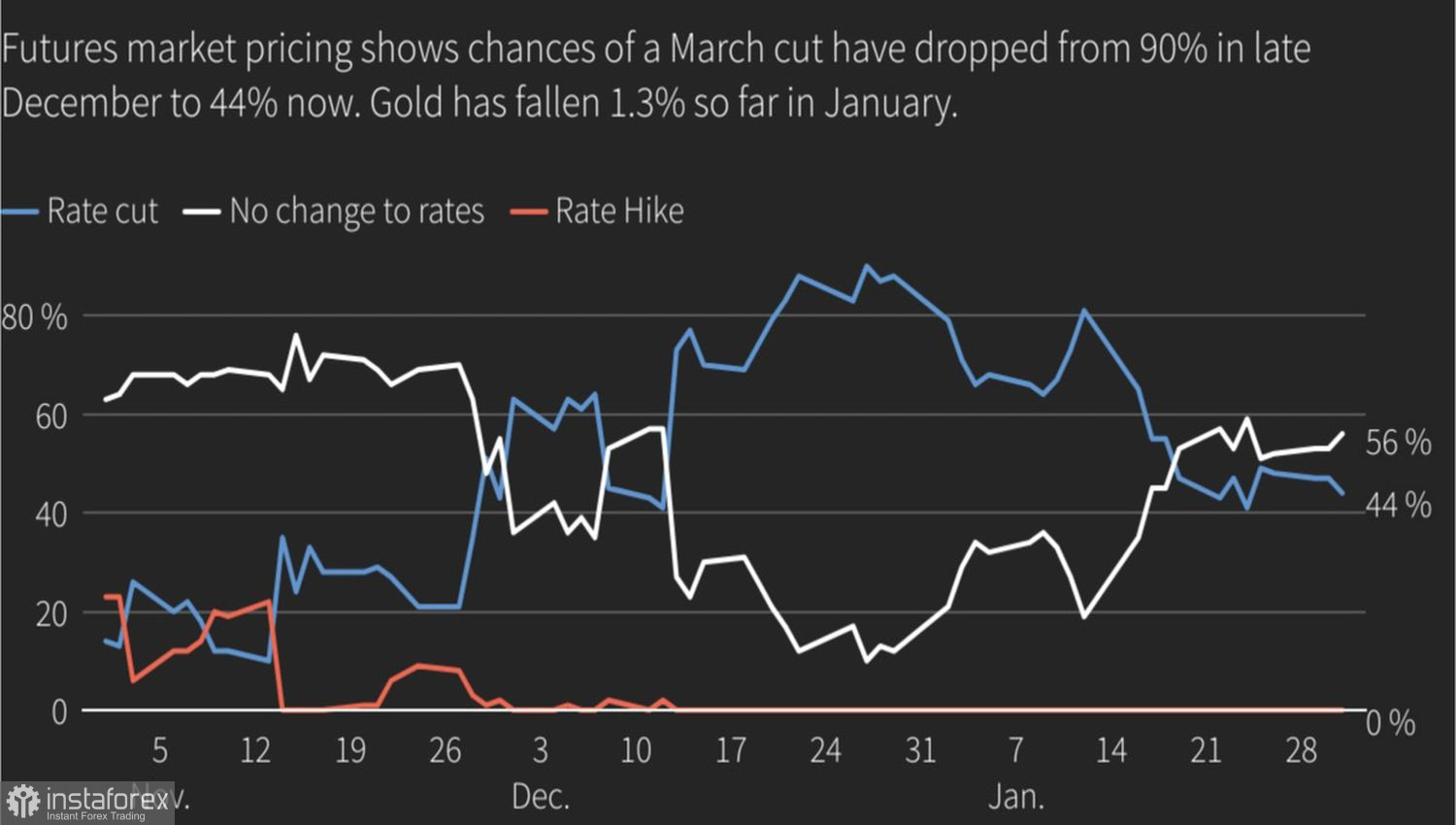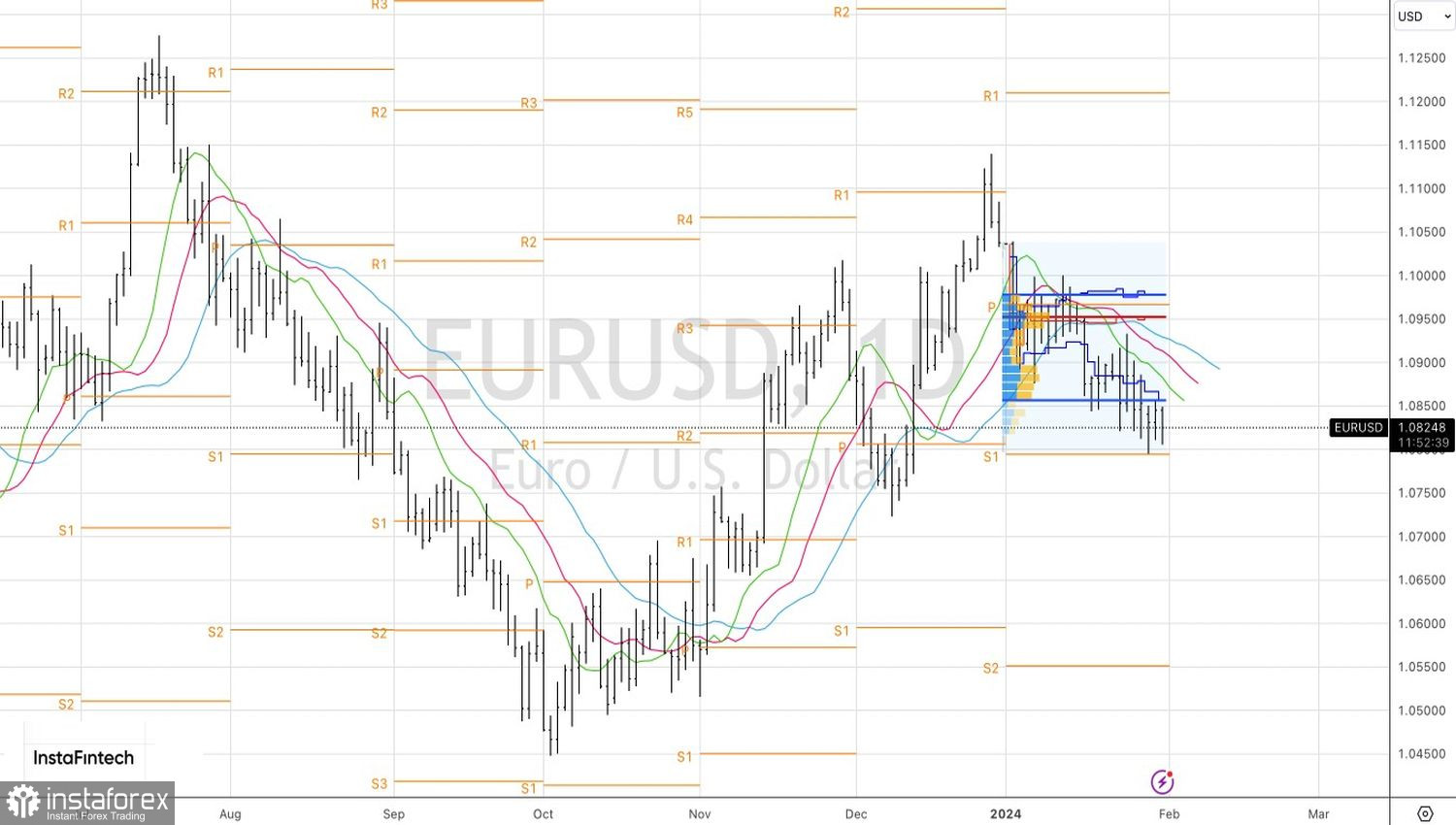When nothing is expected from the Federal Reserve, there is an increased risk of sharp fluctuations in asset prices if the central bank presents a surprise. Investors are certain only about one thing: the federal funds rate will remain at 5.5% in January. Whether Jerome Powell will signal its reduction in March or emphasize its preservation for an extended period, no one knows. And this breeds a sense of Fear.
This feeling is extremely unusual for a market that has lived in Greed for the last four months. U.S. stock indices were setting records, and the dollar was strengthening thanks to the strength of the American economy. Morgan Stanley forecasts that the USD index will grow by the end of 2024 because the U.S. GDP will surpass its counterparts from other countries. The company could have been considered a white crow at the end of last year, but now its opinion is being heeded.
In fact, the Federal Reserve has every reason to start lowering rates. Inflation is rapidly approaching the 2% target, and there are signs of labor market cooling behind the apparent strength. Employment growth is occurring in the hospitality, healthcare, and government sectors, and the reduction in layoffs indicates workers' uncertainty about tomorrow. Moreover, history shows that if unemployment starts to rise, it does so very quickly.
Inflation dynamics in the USA

The problem is that the Federal Reserve must anticipate what will happen tomorrow. Meanwhile, a strong economy and a resumption of supply chain issues due to the crisis in the Middle East risk creating the same conditions as in the 1970s. Back then, the Fed prematurely declared victory over high prices, and their subsequent surge forced it to resume the cycle of rate hikes. In the end, it all turned into a double recession. History repeats itself, doesn't it?
The best solution for Powell and his colleagues is to wait for new data but not close the door to a rate cut in March. The chances that the Federal Reserve will start easing monetary policy in that month soar above 80% and then drop to 40%. The U.S. dollar reacts vigorously to this dynamic. According to Deutsche Bank, an increase in the probability to 100% will push EUR/USD quotes to 1.108. A drop to zero will collapse the main currency pair to 1.066.
Dynamics of the probability of a Fed rate change in March


Personally, I have strong doubts that the Federal Reserve will send a clear signal. After its January meeting, derivatives will not provide any extreme scenario, allowing for the anticipation of the EUR/USD tendency to consolidate. Breakouts of the lower or upper boundaries of the range 1.08–1.085 with subsequent returns should be used to form long or short positions.
Technically, on the daily chart, EUR/USD is experiencing consolidation within the correction to the upward trend. Without closing above 1.085 or below 1.08, it is impossible to talk about the continuation or cessation of the pullback. As a result, false breakouts of the trading range 1.08–1.085 should be used for buying or selling the euro on the return to its boundaries.
 English
English 
 Русский
Русский Bahasa Indonesia
Bahasa Indonesia Bahasa Malay
Bahasa Malay ไทย
ไทย Español
Español Deutsch
Deutsch Български
Български Français
Français Tiếng Việt
Tiếng Việt 中文
中文 বাংলা
বাংলা हिन्दी
हिन्दी Čeština
Čeština Українська
Українська Română
Română

